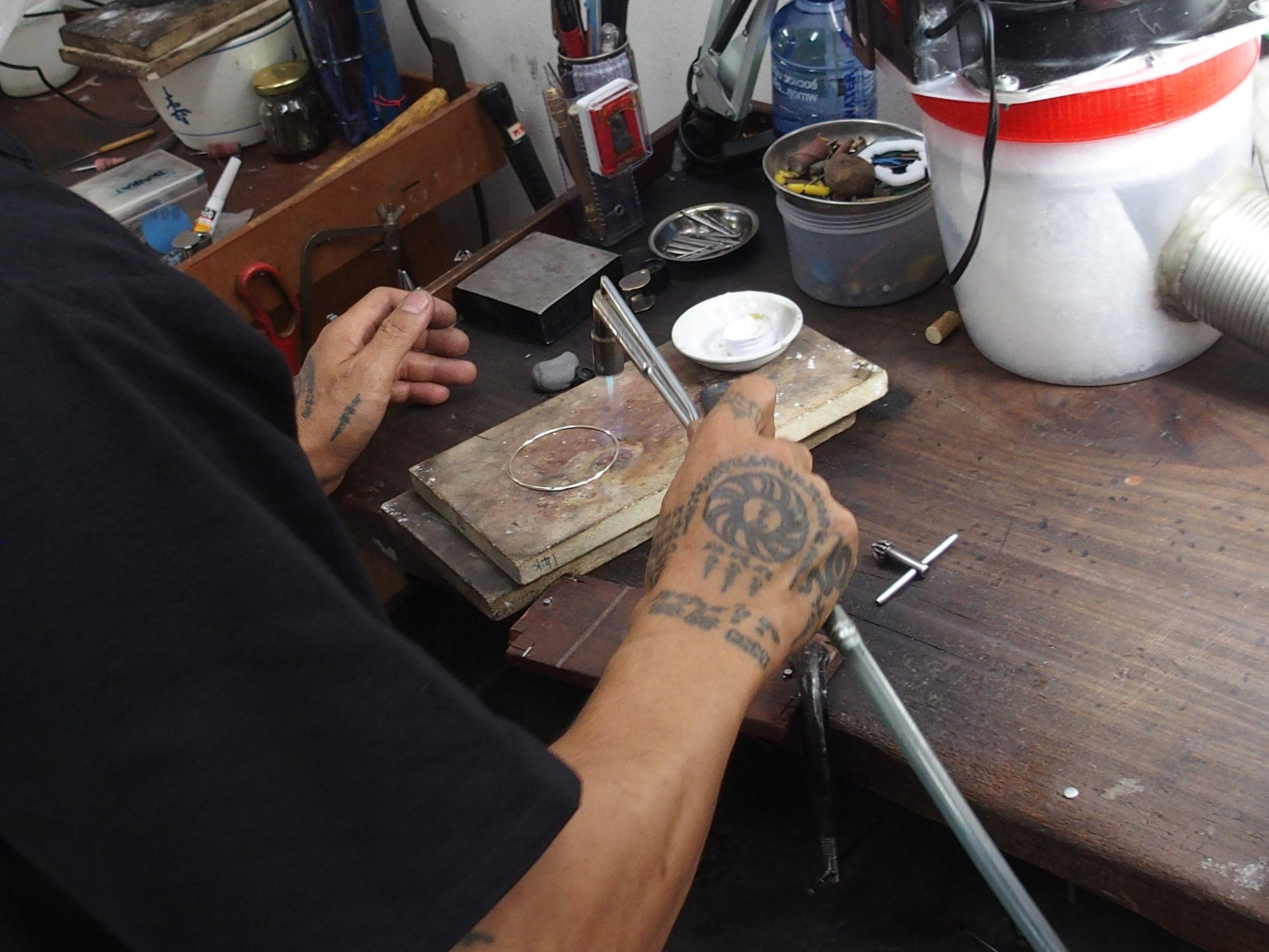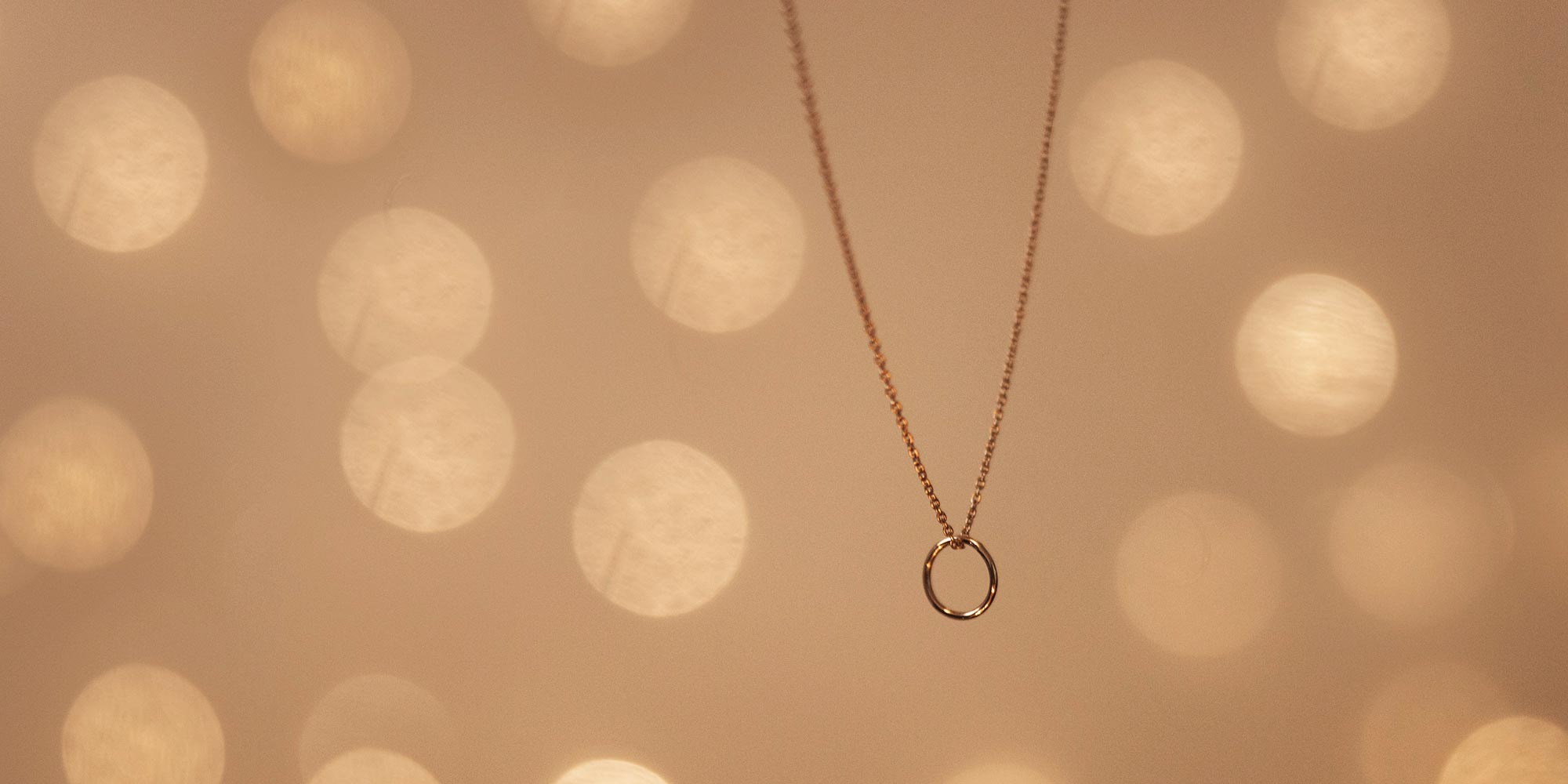
9 jewelry myths - fact or fairy tale? fejn jewelry enlightens!
All that glitters is not gold! Or does it? There are many myths surrounding jewelry and precious stones. Firmly anchored in our minds, they make us believe that pure gold is multicolored, that precious metals often cause allergies, or that recycled jewelry is of inferior quality. Stop it! We answer the most important questions about jewelery and clarify which myths hide facts and which are fake news. Let's go!
Can I check the purity of gold by biting into it?
We've all seen movie scenes with pirates biting gold coins to verify the authenticity of their loot. But how much truth is behind this myth? The fact is that pure gold is softer than healthy tooth enamel. A test bite can leave traces in the gold. However, caution should be exercised with this test method, as the same applies to base lead. This can easily be gilded and effortlessly passes the supposed authenticity test. At the same time, gold mixtures tend to be harder – so they would not pass the bite test despite their authenticity.
But how do you recognize real gold? To do this, the piece of jewelery is first checked for a carat or fineness stamp. The imprint is usually found on real gold jewelry. Worn spots also give an indication of authenticity: does another metal shine through beneath the surface? Then it is most likely not real gold.
Conclusion: Biting into gold jewelry is not a reliable method of determining authenticity. If in doubt, bring your gold to a specialist to determine the material. By the way: With fejn jewelry you don't need a bite test or specialist advice. You can find information about the materials used in our urban genuine jewelery directly on the website under Material & Manufacturing .
Why does gold appear in multiple colors?
Watch out! Although gold comes in yellow, white, and rose, 14k gold generally comes in just one color: yellow. However, since pure fine gold is not very suitable for everyday use due to its soft nature, an alloy is required for its use as jewelry, i.e. a mixture with other precious metals. This is where color comes into play. Other shades of gold can be achieved by adding silver, copper-platinum, aluminum or iron. Logical: The higher the proportion of other metals, the lower the pure gold content. In addition to the changed appearance, the additions not only increase the hardness of the jewelry, but also extend its durability.
Do gold and silver cause skin allergies?
Jewelry fans can breathe a sigh of relief, because allergies to pure gold or silver are extremely rare. Human skin only reacts to precious metals in a few exceptional cases. Still, many people believe they have an allergy to gold or silver jewelry. Why is this myth so persistent? Quite simply: allergies to other components of gold mixtures, such as copper, brass or especially nickel, are common. In the case of unwanted skin reactions, an allergy to gold or silver is then wrongly suspected. A contact allergy test in the dermatology practice provides information about the actual triggers of skin irritation. And of course our fine pieces of jewelery are all free of nickel, lead and cadmium according to EU guidelines and are therefore allergy-friendly.
Is zircon an artificial gemstone?
Zircon is not a real gemstone - wrong! Unfortunately, this assumption also persists. The misunderstanding can be traced back to the name affinity with the artificially produced crystal zirconia. Zircon, on the other hand, is a natural mineral that even comes in various beautiful colors like red, orange, blue or brown. We use it to give our beautiful Zirconia Ceramic Rings their color.
Fun fact: zircon contains the smallest traces of radioactive elements such as uranium, strontium or thorium. What also sounds like a myth is true in this case. But don't panic - the radiation emitted by the mini-particles is hardly measurable and completely harmless.
Are recycled precious metals inferior?
If you think of second-rate goods when you think of recycled jewelry, you are very wrong. Because: Thanks to the unique nature of precious metals, a complete material cycle can be guaranteed. This means that when gold and silver are melted down again, a new wonderful product is created that, thanks to modern processes, does not suffer any loss of quality. Quite the contrary - from an ecological, social and ethical point of view, the recycled product is the better choice. And there are many reasons for that!
Unfortunately, the mining of gold and silver is still associated with child labor. In addition, the working conditions here are often miserable. In addition, the mining of gold and silver is an absolute CO2 generator. boo! Up to 98 percent less environmentally harmful substances are emitted when precious metals are recycled than when new metal is mined. we love There is more information worth knowing on this topic in the article “ Recycled gold and silver - learn more about these sustainable and ecological materials ”
Are lab grown diamonds real diamonds?
Good news for everyone who likes that extra portion of shine: apart from the fact that Laboratory Grown Diamonds are not created deep inside the earth, but, as the name suggests, are produced under laboratory conditions, they do not differ in their chemical and physical properties from conventional diamonds. The laboratory-grown, synthetic diamond consists of 100% carbon and is just as hard as its naturally occurring relative.
However, the diamond from the laboratory is a sustainable and, above all, fair alternative to conventional diamonds. The mining of "blood diamonds" is clearly declared war thanks to this method of gem extraction. In the fejn range, we therefore only use fairly produced Laboratory Grown Diamonds for our filigree real jewellery.
Can I shower and swim with my jewelry?
Jump carefree into the cool water, or carefully remove your jewelery beforehand? Especially on summer vacation, this question often causes headaches for jewelry fans and slows down spontaneous swimming actions. But does it really have to be?
The answer is: unfortunately yes. This myth is a fact. So that you can enjoy real jewelery for a long time, they should not come into contact with water if possible. Chlorinated water in particular damages jewelery and can have a negative effect on the colour. In addition, chemicals, dirt and water can collect between jewelry and skin, which often leads to unsightly skin reactions. Before you take a shower, dive in the sea or cool off in the pool, it's time to get rid of the bling!
How often do I have to clean my jewelry?
To ensure that dust, sweat, dirt and moisture cannot harm your favorite individual items, they should be cleaned every 3 to 4 months. There are several reasons for this: Regular cleaning not only prevents skin irritation, it also ensures that your favorite accessories sparkle for a long time. So you can enjoy real jewelery for years - this is also a great idea in terms of sustainability.
If my jewelry is broken, does it have to go in the trash?
Damaged jewelery belongs in the bin? Please do not! Almost all defects in jewelry can be repaired effortlessly and invisibly, especially with real jewelry. Our repair service says “No!” to the throwaway mentality and is happy to take care of faded or damaged necklaces, bracelets and (ear)rings. If the broken piece of jewelry is a hopeless case, the precious metal is simply melted down at fejn and processed into new individual pieces. Yay!



